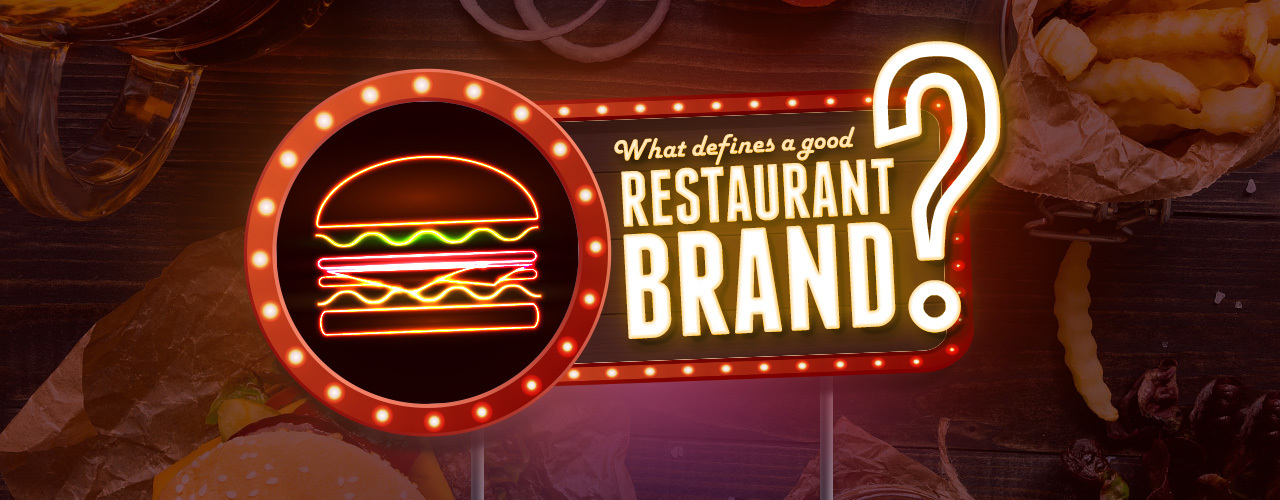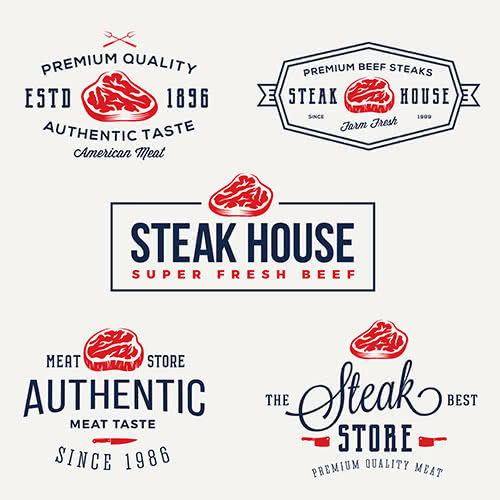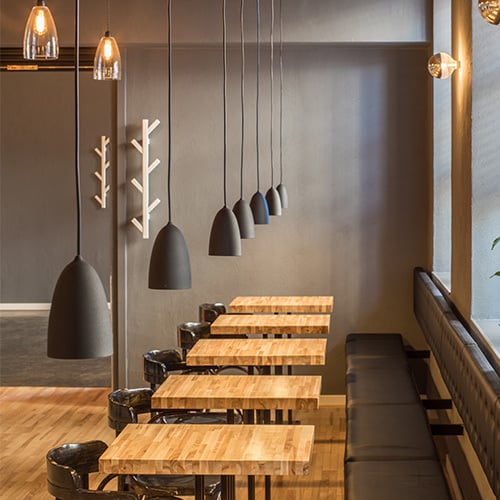
Restaurant Branding
Last updated on 9/23/2019Successful restaurant branding can set your eatery apart, giving it a memorable ambiance that guests will want to experience time and again. Whether you're just starting a restaurant or rebranding and updating your look, explore our guide to understand the basics of restaurant branding and how to create a strong brand identity.
What is Restaurant Branding?
Restaurant branding communicates your restaurant's personality and identity. A restaurant brand expresses the values and mission of your eatery, and it influences your concept and ambiance. A well thought-out brand creates an emotional connection with guests. Your brand should be palpable upon entering your restaurant and should stay cohesive throughout your service style, type of food, and marketing efforts. Not only does quality restaurant branding increase loyalty, but it also attracts new guests who may be drawn to your brand through marketing.
Restaurant Brand Inspiration
If you don’t know where to begin when it comes to restaurant branding, taking a close look at some of your favorite branded restaurants can help you identify the elements that appeal most to you. Try to analyze the way those restaurants make you feel and what specific qualities contribute to that feeling. You can then begin to piece together certain aspects that you want to include in your restaurant branding efforts.
10 Elements of Restaurant Branding
To create a memorable and cohesive brand, explore the 10 essential components of restaurant branding listed below.

1. Concept
There are many different types of restaurants that range in formality level, price range, and type of food. A restaurant concept also includes service style. Are you a sit-down restaurant, pop-up bar, fast casual counter service spot, or food truck? Your concept is like your brand in action, so your concept should be reflective of your brand. For example, Sweetgreen caters to those living an active, on-the-go lifestyle by enabling guests to make healthy eating a normal part of the everyday life. As such, part of Sweetgreen's concept, or brand in action, is their fast casual line setup where guests can quickly get a healthful dish at an affordable price.
2. Demographics
Who will your target audience be? Demographics include characteristics such as age, gender, or income level. Are you aiming to serve families, couples, working professionals, or some combination? Are they trendy or traditional? What’s your customers’ price point? Is there a need for another American grill in your town, or is the market saturated? You might first start by getting an understanding of your intended location's demographics and decide what type of branding and concept will work well there. Otherwise, you can find a specific location that will respond well to the brand you have in mind.
3. Restaurant Mission Statement
A restaurant mission statement outlines the foundation of your restaurant, your values, and what your eatery hopes to achieve. What are you providing to customers that they can’t find elsewhere? A restaurant mission statement is an opportunity to create a connection with customers, staff, and stakeholders. Once you have your mission statement worked out, you can use it to guide the rest of your decisions about the other elements of your brand.
4. Name
Choosing a quality restaurant name is a key part of branding your restaurant. Your name should be unique, yet memorable and relevant. Your name should reflect your brand, and it should give guests a sense of what kind of food you serve and what they can expect when they walk through your door.

5. Logo
Your restaurant logo is a visual element that guests will recognize over time. Your logo may incorporate a symbol, or it may be simple with your name or initials in an expressive font. Your restaurant logo should be consistent with your brand by using a similar color palette and feel. While symbols can be major components of logos, they’re not always necessary. In fact, a well-chosen font can be just as effective in summing up the feeling of your business on your signage, website, menu, and other advertising materials.
6. Tagline
A tagline is a brief, catchy statement that sums up the defining feature of your brand and mission. You’ll often hear taglines on radio ads or see them on a restaurant website or below a logo.
7. Ambiance

Restaurant ambiance is one of the most important and dynamic avenues through which you can express your brand. Guests will remember how they felt at your establishment, making it essential to create a distinctive and pleasant atmosphere. You should fine-tune every aspect of your ambiance so that it adheres to your brand and creates a comfortable guest experience. Below are key components of your atmosphere to take into consideration when branding your restaurant:
- Lighting
- Interior decor
- Servingware and other tabletop details
- Color scheme
- Music
- Server clothing
- Server composure
- Menu design
8. Website and Other Digital Marketing Platforms
Both prospective guests and loyal customers will likely check out your website to see your menu, hours, or to simply learn more about your eatery. People may also choose to follow your restaurant on social media platforms, including Instagram and Facebook. It's important to keep your brand consistent on every platform. The essence of your website, the aesthetic of your Instagram photos, and the tone and language used are all ways to express your brand. In some cases, your website or Instagram may be the first impression guests will have of your business, so investing in a high-quality website and keeping a professional, active Instagram is worth it.

9. Food
The type of food you serve is another central component of your restaurant brand. If you operate a Mexican restaurant that draws in large groups or offers a bumping happy hour, include lots of share plates to cater to groups. In the example of Sweetgreen, serving healthy, farm-fresh food is a key aspect of their branding. From the ingredients you use to the name of each dish, try to check that every decision parallels your mission statement and brand. If you advertise your restaurant as a high-end spot, make sure to emphasize the quality of your ingredients and of your preparation processes. If you want to be the best burger joint in your town, take extra time to find the perfect bakery that can provide your signature brioche burger buns.
10. Branded Merchandise
From t-shirts to beer glasses, there are plenty of opportunities to offer products to promote your brand. You can also give away or sell items like pens, stationery, tote bags, and Christmas ornaments. To spread the word about your restaurant, you can even create contests with free giveaways. Additionally, when guests purchase products that feature your restaurant logo, it further increases loyalty because they now own an item connected to your restaurant, making them invested in your brand. And the more your customers share your logo, the better brand recognition you’ll get.
Restaurant Brand Cohesion

Once you’ve settled on the major components of your brand, it’s important to stick to them and make sure they make sense together. For example, you wouldn’t serve filet mignon on a paper plate or play country music at an Italian restaurant. That’s not to say that you can’t mix and match styles in order to intentionally develop an entirely new concept, but any deviation from the norm should come across as intentional, otherwise you risk missing the mark and leaving your customers feeling confused.
Cohesion extends to your online presence as well. You wouldn’t have a fine dining restaurant that leaves snarky Facebook comments. But if you’re an edgy BBQ food truck, maybe a little bit of snark on social media is perfectly fine. Any time you roll out a new facet of your brand, you should always check in with your brand messaging to make sure it works within your existing context.
The more time and thought you put into each component of your establishment, the more likely you are to be recognized and appreciated by new and loyal customers alike. Strong restaurant branding creates an emotional connection with your customer base and can greatly influence the success of your business.






